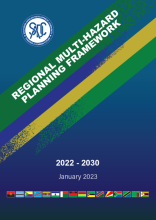The Southern African region is endowed with a rich topography consisting of a wealth of floraand fauna. This is largely due to its combination of tropical and temperate climatic conditions, annual rains, abundant maritime coastlines, rivers, deserts, savannah, forests and rich wildlife. The region’s socio-economic performance is driven by several contributing factors including tourism, which contributes significantly to its Gross Domestic Products (GDP). However, the region also suffers from severe natural and environmental shocks. These include climate change related impacts consisting of the natural hazards such as: droughts that lead to food insecurity; cyclones and storms that result in flooding; human, plant and animal pests and disease outbreaks and human-induced incidents like industrial and transport accidents, as well as veld fires and civil conflicts. According to the 2022 Synthesis Report on the State of food and nutrition vulnerability in Southern Africa, food insecurity affects 55.6 million people, with malnutrition rates that average over 25%, across the region. Food security is also threatened by the devastating outbreaks of the African Migratory Locusts that have been recently reported in some Member States including Angola, Botswana, Namibia, Zambia and Zimbabwe.
Date Signed
English

